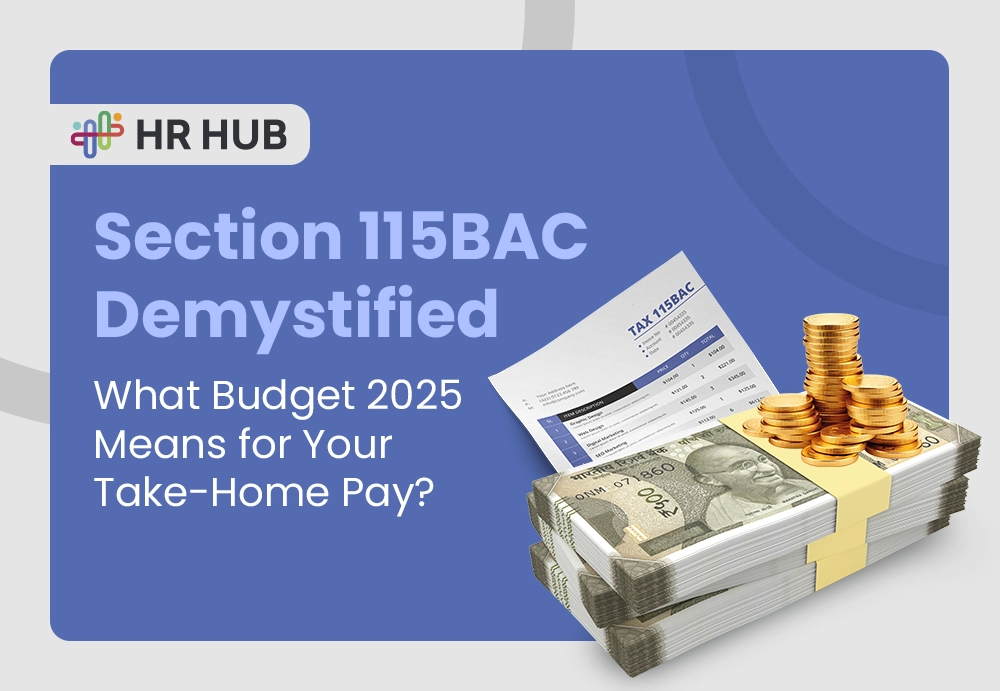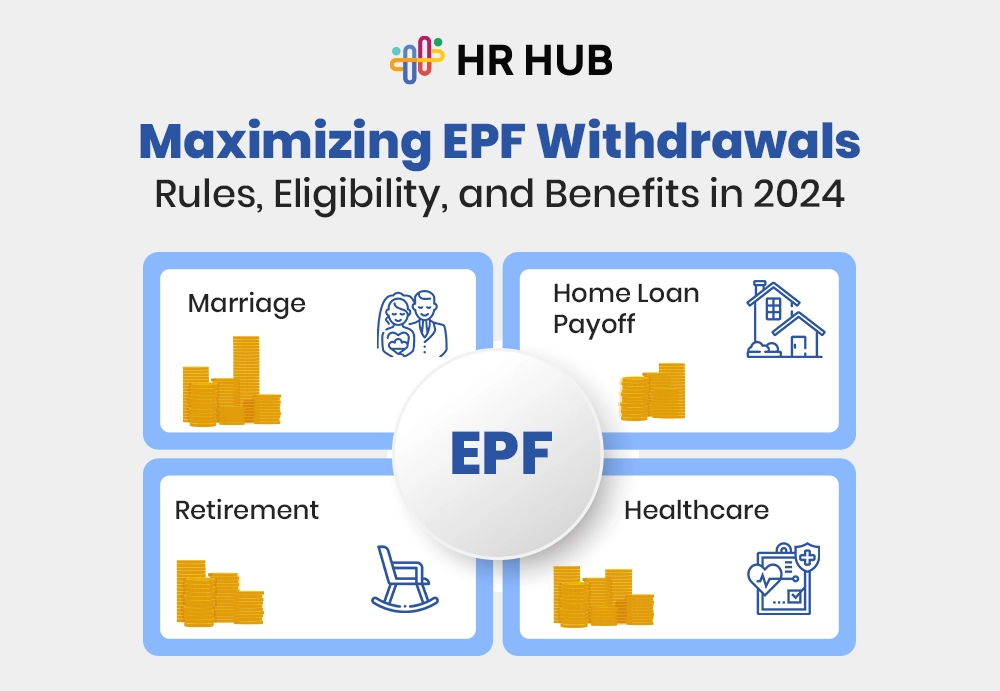Spoiler alert: Employee satisfaction doesn't begin on Day 1. It begins long before—and it certainly doesn’t end with the exit interview.
Welcome to the world of employee lifecycle management—a concept that's often boxed into checklists and HR policies, but in reality, it’s your organization’s heartbeat. Whether you're a startup still figuring out your onboarding script or an enterprise managing a global workforce, the lifecycle of your employee defines more than just tenure—it defines culture, continuity, and success.
Let’s dive in, not just to optimize, but to reimagine the way your organization handles every phase of the employee journey.
1. Talent Attraction: Crafting the First Impression That Lasts
In an increasingly candidate-driven market, attracting top talent begins well before a job is posted. Today’s professionals evaluate employers with the same rigor that companies apply to candidates.
They explore your culture, leadership values, commitment to diversity, and even how you treat existing employees. Talent attraction is not a transactional activity—it’s a strategic brand exercise. It sets the tone for your entire employee lifecycle.
Optimization Strategies:
- Develop a Clear Employer Value Proposition (EVP): Your EVP should capture the essence of what makes your organization unique and distinct. Go beyond benefits—highlight your work culture, leadership vision, innovation, flexibility, and purpose. Ensure it resonates with various employee segments (e.g., early-career professionals, experienced professionals, remote workers).
- Showcase Culture Proactively: Share authentic stories of real employees, a peek into your office (or remote work) life, and team accomplishments. Platforms like LinkedIn, Instagram, and Glassdoor are powerful channels for storytelling about culture.
- Leverage Employee Advocacy: Encourage employees to share their work experiences on social media. Implement recognition programs that reward referrals or positive brand contributions. Their voice builds credibility far beyond formal employer branding campaigns.
- Optimize Your Career Page: Your career page should inspire, not just inform. Use visuals, videos, and testimonials. Highlight your DEI efforts, sustainability initiatives, community work, and learning culture. Ensure it is mobile-responsive and optimized for search engines.
Pro Tip: Conduct a bi-annual employer brand audit. If your Glassdoor reviews, LinkedIn posts, and internal culture surveys tell different stories, align them. Authenticity is key to attraction.

2. Recruitment & Selection: Systematic Hiring with Strategic Depth
Recruitment is no longer about filling roles quickly—it’s about building organizational capability for the future. Poor hiring decisions cost time, money, and morale.
To stay competitive, organizations must adopt recruitment strategies that are data-driven, candidate-centric, and aligned with long-term workforce planning.
Optimization Strategies:
- Implement Smart Recruitment Tools: Use an AI-powered Applicant Tracking System (ATS) to streamline job postings, automate resume parsing, and schedule interviews. This reduces bias, speeds up the hiring process, and enhances the recruiter experience.
- Introduce Structured Interview Frameworks: Replace ad-hoc interviews with structured formats using behavioral and situational questions, predefined rubrics, and scorecards. This ensures consistency, minimizes unconscious bias, and provides a more objective hiring decision.
- Prioritize Candidate Experience: Timely communication, respect for time, transparency about the process, and post-interview feedback—even if it’s a rejection—create lasting impressions. A positive experience can turn even declined candidates into brand advocates.
- Build Talent Pipelines: Identify future business needs and proactively build talent communities. Engage with passive candidates through newsletters, webinars, and social media content so they’re ready when the right role becomes available.
Real Example: Google employs structured interviews with cross-functional panelists and documented scoring systems to ensure fairness and minimize biases across its global recruitment process.
3. Onboarding: From Offer Letter to Embedded Employee
The onboarding process is not just a checklist of formalities—it is a critical milestone in the engagement.
A well-executed onboarding experience accelerates productivity, builds early loyalty, and reduces early-stage attrition. It sets the foundation for how the employee views the company, their role, and their future within it.
Optimization Strategies:
- Create a 30-60-90 Day Onboarding Roadmap: Clearly define expectations, objectives, and training plans for each phase to ensure a smooth onboarding process. Incorporate both role-specific deliverables and cultural immersion activities.
- Go Beyond Paperwork: While documentation is important, onboarding should also emphasize connections. Include leadership introductions, team meet-and-greets, and Q&A sessions with HR. Utilize multimedia content—such as videos, interactive PDFs, or gamified journeys—for enhanced engagement.
- Assign Mentors or Onboarding Buddies: A designated guide can accelerate integration, provide context to unwritten cultural norms, and act as a go-to resource for questions.
- Automate Onboarding Checklists: Use your HRMS or onboarding platform to streamline form submissions, document verification, hardware/software provisioning, and first-day tasks.
Best Practice: Surprise new hires with a branded welcome kit—company merchandise, desk essentials, or even a personalized message from the CEO. These gestures humanize the experience.
4. Learning & Development: Continuous Growth as a Competitive Edge
Employee development is no longer a perk—it’s a strategic necessity. In a knowledge-driven economy, continuous learning keeps your workforce relevant and future-ready.
Organizations that prioritize growth and upskilling not only retain top talent longer but also build internal mobility pipelines, foster innovation, and improve overall business performance.
Optimization Strategies:
- Design Role-Based Learning Journeys: Avoid one-size-fits-all training. Create learning paths for different job roles, seniority levels, and career aspirations. For example, a sales executive might follow a track including product mastery, communication, negotiation, and CRM analytics.
- Use Microlearning and Blended Formats: Today’s professionals prefer learning in small, manageable doses. Combine e-learning, virtual instructor-led training (VILT), on-the-job assignments, peer learning, and interactive simulations.
- Align Learning with Business Goals: Every learning initiative should connect to business outcomes. Whether it’s improving customer satisfaction, reducing compliance issues, or preparing for leadership roles, make the ROI visible.
- Promote a Culture of Curiosity: Recognize and reward employees who complete certifications, mentor others, or create internal learning content. Peer-to-peer learning and knowledge sharing increase engagement and retention.
Engaging Tip: Allow employees to build and present their own mini-courses or lunch-and-learn sessions. It fosters a bottom-up learning culture and builds internal leadership.
5. Performance Management: Driving Accountability Through Real-Time Feedback
In an agile workplace, static performance reviews quickly become outdated. Organizations today require performance management systems that are dynamic, transparent, and focused on development rather than evaluation.
When done correctly, it empowers employees to take ownership of their goals and fosters alignment between individual outputs and the organization's strategy.
Optimization Strategies:
- Implement OKRs or KPIs with Clarity: Define clear, measurable goals for every team and role. OKRs (Objectives and Key Results) promote alignment, transparency, and agility.
- Use 360-Degree Feedback Systems: Broaden feedback beyond managers. Involve peers, subordinates, cross-functional colleagues, and even customers if applicable. This ensures a holistic view of performance and behavior.
- Enable Frequent Check-ins: Replace the annual review with quarterly or monthly one-on-one sessions. These conversations should focus on goals, challenges, learning needs, and recognition, rather than just ratings.
- Separate Performance and Compensation Discussions: Create space for growth-focused conversations that aren’t tied to money. It fosters trust and encourages open dialogue around strengths and areas of improvement.

6. Employee Engagement: Building Emotional and Cultural Commitment
True engagement goes far beyond job satisfaction. It reflects an employee’s emotional commitment to the organization’s mission, values, and long-term success.
Engaged employees don’t just show up—they contribute, advocate, and innovate. In contrast, disengagement can lead to absenteeism, high turnover, and cultural erosion.
Optimization Strategies:
- Run Regular Pulse Surveys—and Act on Them: Short, monthly surveys can uncover trends in morale, burnout, and satisfaction. More importantly, follow up on key issues. Employees must see that their feedback leads to action.
- Create Feedback Loops: Publish results from surveys or listening sessions and share what decisions were made based on them. This builds credibility and accountability.
- Design Meaningful Recognition Programs: Use a mix of formal and informal recognition—digital badges, employee of the month, shout-outs on Slack, personalized thank-you notes from leadership.
- Foster Inclusion and Belonging: Empower Employee Resource Groups (ERGs), run unconscious bias training, celebrate cultural events, and build mentorship programs for underrepresented talent.
Example: Salesforce’s V2MOM strategy (Vision, Values, Methods, Obstacles, Measures) helps every employee align their engagement with the organization's direction.
7. Career Growth & Succession Planning: Preparing Today for Tomorrow’s Needs
Career progression is among the top reasons employees choose to stay—or leave—an organization. Similarly, a lack of succession planning can result in leadership gaps and stalled momentum.
Investing in structured internal mobility and growth opportunities not only retains top talent but also ensures business continuity and long-term stability.
Optimization Strategies:
- Create Internal Career Maps: Offer visual guides that show possible career paths within the company. Include lateral moves, skill requirements, and likely timeframes for progression.
- Use Skill Matrices for Gap Analysis: Compare current employee capabilities with the requirements of future roles to identify gaps. This enables proactive development and targeted upskilling.
- Promote Job Rotations and Stretch Assignments: Let employees explore new functions or lead projects outside their immediate role. It improves cross-functional understanding and leadership readiness.
- Identify and Nurture High-Potential Employees (HiPos): Use data from performance reviews, feedback, and psychometric assessments to identify HiPos. Provide them with coaching, advanced training, and visibility to senior leaders.
Engagement Booster: Create an internal promotion campaign where every promoted employee shares their journey. It boosts morale and motivation across the board.
8. Offboarding: Ending on a Respectful and Structured Note
Offboarding isn’t just a logistical exercise—it’s your last chance to leave a lasting impression. A professional, empathetic offboarding experience can protect your employer brand, support future rehire opportunities, and offer critical insights into workplace health.
Inconsistent or disorganized exits, on the other hand, can result in compliance risks, security breaches, and reputational damage.
Optimization Strategies:
- Standardize Offboarding Workflows: Use checklists and HR tech to manage tasks such as exit interviews, final settlements, hardware retrieval, system access revocation, and knowledge transfer.
- Conduct Insightful Exit Interviews: Focus less on ticking boxes and more on uncovering themes—why people leave, what they valued, what needs improvement. Use this data to inform engagement and retention strategies.
- Appreciate Contributions Publicly: Host short farewell sessions or post company-wide thank-you messages. Recognition at exit fosters respect and keeps the door open for future collaboration.
- Ensure Compliance at Every Step: Final settlements must include gratuity, unpaid leaves, provident fund contributions, tax forms, and clearance certificates—all issued without delay.
Smart Move: Use “stay interviews” as a preventative strategy. Conduct them with key talent at risk of leaving to understand their needs and adjust proactively.
9. Alumni & Post-Exit Engagement: The Lifecycle Doesn’t End Here
Just because an employee leaves doesn’t mean the relationship ends. Former employees can be powerful allies—as brand advocates, referral sources, partners, or even future rehires.
A formal alum engagement strategy reflects maturity in employer branding and workforce planning.
Optimization Strategies:
- Launch a Digital Alumni Portal: Provide former employees access to updates, job openings, exclusive webinars, networking opportunities, and more.
- Run Boomerang Rehire Programs: Encourage former top performers to return with incentives like fast-tracked interviews, sign-on bonuses, and customized re-onboarding.
- Maintain Communication Through Newsletters: Share organizational highlights, new leadership introductions, and product updates. This keeps alums connected to your mission and culture.
Insight: Leading firms like Deloitte and McKinsey actively nurture alum networks—not just for talent, but also as a source of future clients and advocates.
10. Tech as the Backbone: Integrating Tools Across the Lifecycle
In a world of hybrid work, global teams, and data-driven decision-making, technology is the glue that holds the employee lifecycle together.
A modern, connected tech stack ensures consistency, scalability, personalization, and compliance. Without the right tools, even the best people strategies fall short.
Optimization Strategies:
- Adopt a Unified HRMS (e.g., HR HUB): Consolidate recruitment, onboarding, attendance, payroll, performance, learning, and offboarding into a single platform for seamless tracking and management.
- Automate Repetitive Processes: Workflow automation for approvals, reminders, document routing, and training assignments saves HR time and improves accuracy.
- Enable Data-Driven Decision Making: Use dashboards to track attrition trends, hiring velocity, training completion, engagement scores, and performance analytics.
- Ensure Scalability, Security, and Compliance: Invest in tools with built-in role-based access controls, audit logs, compliance alerts, and data encryption—especially critical in regulated industries.
Forward Step: Integrate AI for predictive analytics—identify high flight-risk employees, recommend learning modules, or auto-match candidates to job roles.

Bringing It All Together
Optimizing the employee lifecycle is about creating consistent, meaningful experiences at every stage, from the initial interaction to post-exit engagement. When each phase is handled with clarity and intention, organizations experience stronger retention, improved performance, and a more resilient culture.
To support this journey, solutions like HR HUB offer integrated tools that streamline onboarding, performance management, learning, and offboarding, making it easier to manage and improve every aspect of the employee experience.
A well-managed lifecycle doesn’t just support employees—it strengthens your entire organization.










